How Green Roofs Insulate Against Heat, Cold & Noise
Installing a green roof can save you money both at home and in your business by cutting energy costs
How a Green Roof Can Help You Save
During the winter months it is possible to gain up to an extra 25% insulation in dry conditions by installing a green roof. It can also raise the outside temperature of the roof on average by 4.5°C when the weather is cold. It will also reduce heat loss due to wind by up to 50% compared to a bare roof. By keeping the roof of your property covered less heat is lost meaning you won’t have to spend as much money to stay warm.
In the summertime a green roof has the ability to keep properties cooler than bare roofs by average of 15°C. It is not uncommon for homes and businesses to spend more on air conditioning in a year than heating. Given the amount the temperature outside of a building can affect the inside, installing a green roof covering can reduce the need for artificial cooling.
The level of insulation…
The level of insulation a living roof can provide though depends on many factors. The moisture level of a green roof can determine how effective it is as an insulator. As moisture levels can vary enormously depending on local climatic factors, the thermal performance of the roof will vary too. It is for this reason that green roofs are not given a U-Value.
The type of green roof you choose will also influence its thermal performance. Generally, the deeper the layer of growing medium, the better the roof is at insulating – but the weight of an intensive or semi-intensive green roof can put a lot of strain on a building.
Get started with a green roof
 |
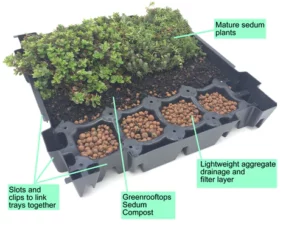 |
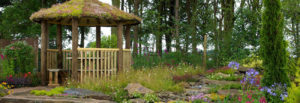 |
 |
 |
 |
On the other hand extensive systems, like Enviromat Sedum Matting, are typically more lightweight so may not provide quite as much insulation. But, they are cheaper to install and easier to retro-fit onto garden buildings, porches or garages.
The Urban Heat Island Effect
Installing a living green roof is a simple yet effective way to combat the urban heat island effect. This is the term used to describe the temperature difference between rural and built up areas. The difference is caused by lots of buildings reflecting and radiating heat from the sun. This means that densely populated areas can become significantly hotter than rural areas. Green roofs fight the urban heat island effect by:
- Absorbing solar heat, as opposed to reflecting it
- Releasing moisture cooling surrounding atmospheres
The process of plants releasing moisture back into the atmosphere is known as Evapotranspiration. This is a very important part of the water cycle and essential for avoiding periods of drought.
How sedum plants protect against noise –
A sedum green roof can potentially half the amount of noise pollution entering your home. Perfect for those seeking peace in busy urban areas.
Green Roofs Are Great As Natural Sound Proofing
Beyond the ecological and environmental advantages that your green roof provides, there are also a number of social benefits. With the pace of everyday life ever-increasing, the urban side effects on our neighbourhoods often come at a high price. However, here at Turfonline, we strive to create equilibrium between modern society and a healthy environment.
Green Roofs Provide Noise Attenuation
When it comes to noise green roof systems can be important in the reduction of noise pollution, especially in urbanised areas. Green roofs have excellent noise attenuation, especially for low frequency sounds. Conversely, hard conventional roofs tend to just deflect it. It is the combination of both substrate and plants, along with the layers of trapped air within green roofs that make them an ideal solution as a natural sound insulation barrier.
How Green Roofing can protect against noise
Each component plays an important role. The growing medium acts as barrier to lower frequencies. The plants focus on obstructing higher frequencies. In an already noisy urban environment this helps. This same soft layer of sedum blanket on your green roof also improves the buildings sound insulation properties, thus reducing sound pollution within.
Understandably the extent of this is dependent on the system that you have chosen and the substrate depth. The International Green Roof Association (IGRA) indicates that on average your green roof can reduce sound reflection by up to 3 dB. It can also improve sound insulation by up to 8 dB. This is extremely advantageous, even more so for those who live close to airports or noisy industrial areas.
Additional Benefits Of Green Roofs
Studies by the IGRA also show that electromagnetic waves from transmitting stations can be effectively shielded by the vegetation layer. Although the risk posed by electromagnetic radiation (from wireless devices and mobile communication) to human health is still a question for debate, it has already been widely established that green roofs are capable of reducing electromagnetic radiation penetration by 99.4% (Herman 2003).
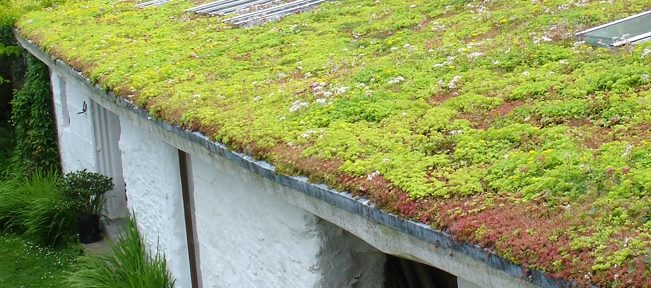
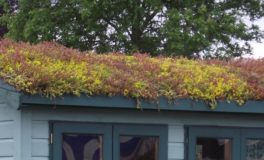 Green roofs for garden buildings
Green roofs for garden buildings  Green roof problems and how to solve them
Green roof problems and how to solve them 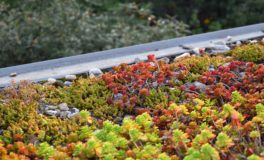 Green roofs for environmentally friendly urban development
Green roofs for environmentally friendly urban development 

